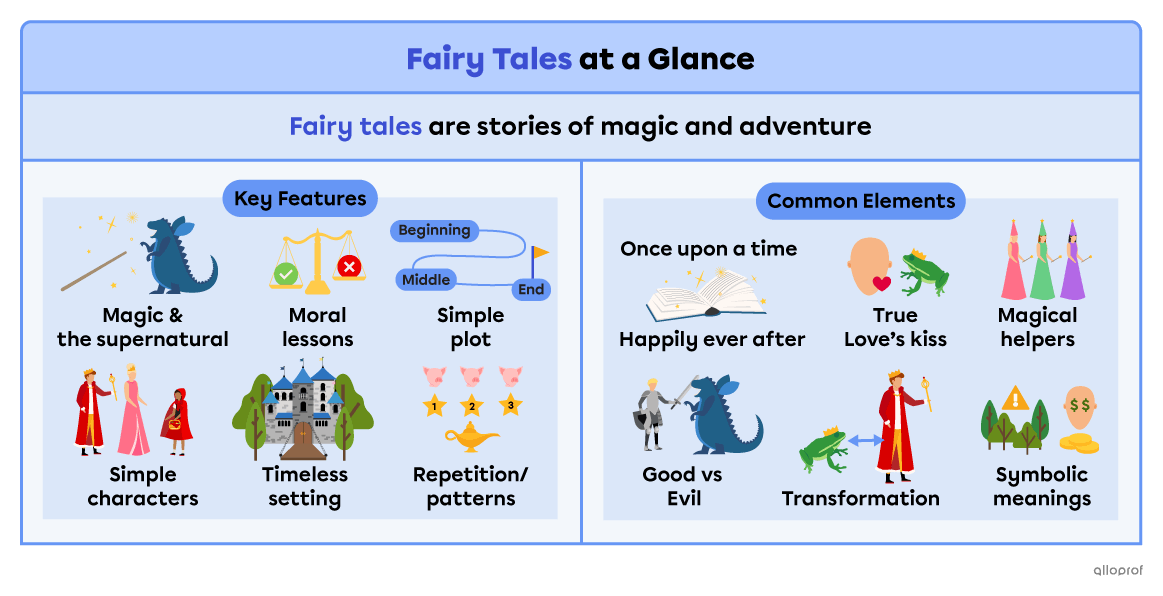Fairy tales tell stories of magic, adventure and wonder in a world of make-believe.
They are a type of folktale.
Most fairy tales contain similar features.
Here are some of their key features.
-
Magic often creates and solves problems for the main character.
-
Talking animals, fairies, witches, giants or dragons are common in fairy tales.
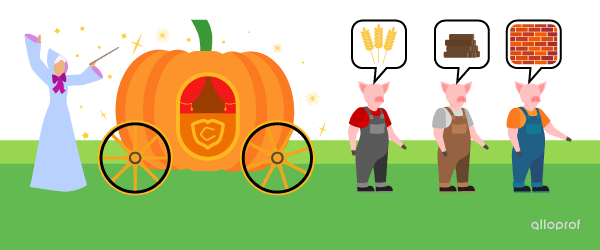
-
Lessons about right and wrong, honesty, courage and kindness are at the heart of fairy tales.
-
In most cases, good overcomes evil at the end.
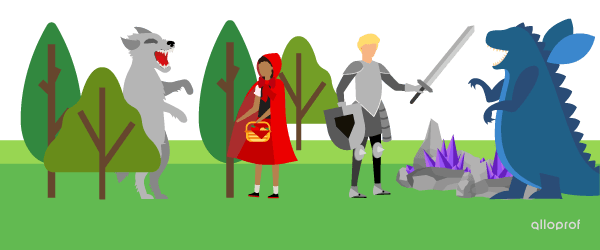
-
The story has a clear beginning, middle and end.
-
It usually focuses on 1 problem or journey.
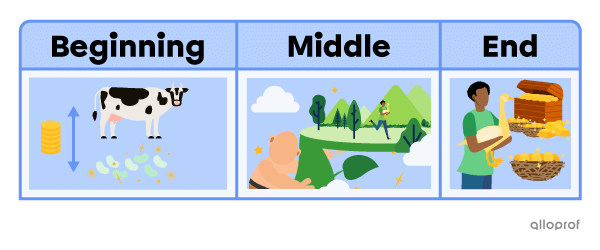
-
Characters are characterized as clearly good or bad, heroes or villains.
-
They are easy to recognize.
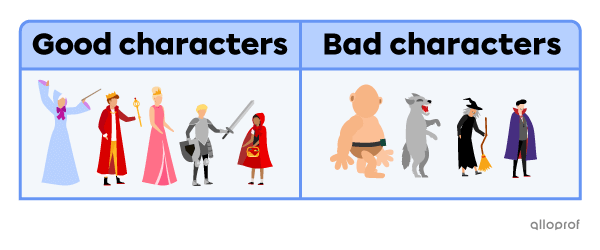
-
The story generally takes place a long time ago, but never at a specific period.
-
It takes place in a familiar place, but not in a real world setting that we can identify.
-
Often begins with the phrase “‘Once upon a time, in a faraway land…”
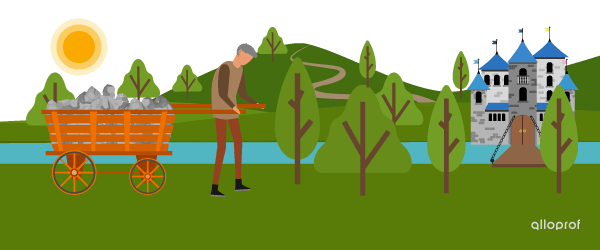
-
Events, characters, words and phrases are often repeated.
-
Repetitions and patterns come in 3s (3 witches, 3 pigs, 3 bears).
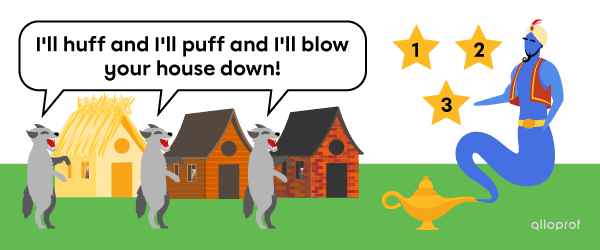
Fairy tales are famous for using certain story elements over and over.
Here are some frequently used elements that you can expect to find in fairy tales.
Story begins with the words “Once upon a time.”
Ends with the words “Happily ever after.”
Conflict between good and evil
Character transformation or changes
Power of true love’s kiss
Magical helpers for the hero
Repeated symbolic meanings
→ Objects or places used to represent something else like an idea or a feeling

